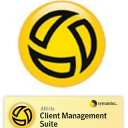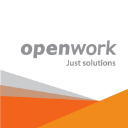IT Service Management (ITSM) software: purchase guide
IT Service Management Software in 2025: Because Chaos Isn’t a Strategy
What is IT Service Management Software
IT Service Management (ITSM) software is what keeps your IT operations from turning into a fire drill. It’s the central nervous system for delivering, managing, and improving IT services across your organization—whether you're handling support tickets, managing user access, tracking assets, or automating routine tasks.
In short: it connects people, processes, and technology in a way that makes IT smarter—not just faster.
Modern ITSM software goes beyond the help desk. It covers the entire service lifecycle: from incident and problem management, to change requests, asset management, and service delivery optimization. Whether you’re a startup scaling fast or a global enterprise juggling thousands of users, ITSM is how you stay in control.
Why ITSM Software is a Game-Changer
Picture this: your employees can’t access an app. A server goes down. A new hire needs a laptop, permissions, and an email account—yesterday. Now multiply that by 50. Or 500.
Without ITSM software? That’s a recipe for bottlenecks, frustrated users, and IT burnout.
With ITSM software? It’s a streamlined process. Requests are tracked. Workflows are automated. Priorities are clear. Metrics are visible. Everyone knows who’s doing what, when, and why.
Here’s why it matters in 2025:
Remote work is here to stay. Distributed teams need consistent service delivery, no matter the location or time zone.
IT environments are more complex than ever. Cloud, on-prem, SaaS, hybrid—you need visibility across it all.
Security and compliance require precision. Managing access and auditing changes can’t be done in spreadsheets anymore.
The business expects more from IT. Faster response times. Smarter automation. Measurable outcomes.
ITSM software isn’t just about solving tickets—it’s about delivering value, building trust, and aligning IT with business outcomes.
How to Choose the Right ITSM Software
There’s no shortage of ITSM tools out there. The challenge? Finding one that fits your structure, your team, and your ambition. Here’s how to narrow it down:
Focus on scalability
Are you managing 50 requests a week or 5,000? Choose a platform that can scale with your business—without creating more complexity.
Prioritize automation
Repetitive tasks are productivity killers. Great ITSM software automates provisioning, approvals, incident routing, and more. If it saves your team clicks, it’s worth it.
Look for native integrations
The right tool connects seamlessly with your directory service (like Active Directory), endpoint management, HR systems, and ticketing tools.
Check for strong reporting and analytics
Can you track SLA compliance? Identify recurring issues? Surface bottlenecks? Good data means better decisions—and better service.
Don't underestimate usability
If your technicians hate the interface or your end users can’t submit a ticket without Googling it, it won’t get used. Clean UI = high adoption.
Plan for a smooth implementation
Even the most powerful platform can flop if the rollout fails. Look for vendors that offer guided onboarding, robust documentation, and flexible deployment options (cloud, on-premise, or hybrid). Also, consider how quickly your team can get up to speed. A good ITSM implementation should take weeks, not months—and should come with support every step of the way.
Top IT Service Management Software in 2025
| Software |
Key Features |
Pricing |
Trial & Demo |
Best For |
| ManageEngine ServiceDesk Plus |
Incident management, change tracking, asset management, workflow automation, SLA support |
From $10.00/month |
✅ Free version
✅ Free trial
✅ Free demo |
Companies of all sizes looking to streamline support, track assets, and automate service delivery |
| ManageEngine ADManager Plus |
Active Directory user provisioning, bulk account management, permission automation, policy compliance |
From $595.00/year |
✅ Free version
✅ Free trial
✅ Free demo |
IT teams that need robust, automated control over user and group management |
| ManageEngine ADAudit Plus |
Real-time Active Directory auditing, access monitoring, user behavior alerts, compliance-ready reports |
Pricing on request |
✅ Free version
✅ Free trial
✅ Free demo |
Organizations with strict compliance needs and a focus on access security |
Trends Defining ITSM in 2025
IT Service Management is no longer just about ticketing systems—it’s about business resilience, employee experience, and real-time operations. Here are the trends that matter most this year:
From reactive to predictive IT
Thanks to AI and machine learning, ITSM tools are shifting from “fix-it” mode to “prevent-it” mode. Predictive analytics can now flag issues before they escalate, allowing IT teams to intervene proactively. Think fewer downtimes, less firefighting, more planning.
Hyperautomation takes center stage
The automation trend isn’t slowing down—it’s accelerating. ITSM platforms now automate not only ticket handling but user onboarding, configuration changes, license renewals, and even compliance workflows. It’s not about eliminating people; it’s about freeing them to focus on strategic work.
Unified service management
IT is no longer a silo. Modern ITSM software increasingly connects with HR, finance, facilities, and operations to offer organization-wide service portals. The result: less tool sprawl, more cohesive support, and a better employee experience.
Experience is the new metric
SLAs are still important—but in 2025, companies are also tracking XLAs: experience level agreements. ITSM platforms now measure sentiment, satisfaction, and usability alongside resolution time. Because speed alone isn’t enough—how people feel matters, too.
Conclusion
ITSM software has evolved. It’s no longer just the engine behind IT support—it’s the driver of smarter operations, tighter security, and better employee experiences.
If your team is stuck in manual processes, chasing tickets, or lacking visibility, it’s time to modernize.
Because in 2025, IT service management isn’t about keeping the lights on—it’s about helping your entire organization run smarter, faster, and stronger.



















